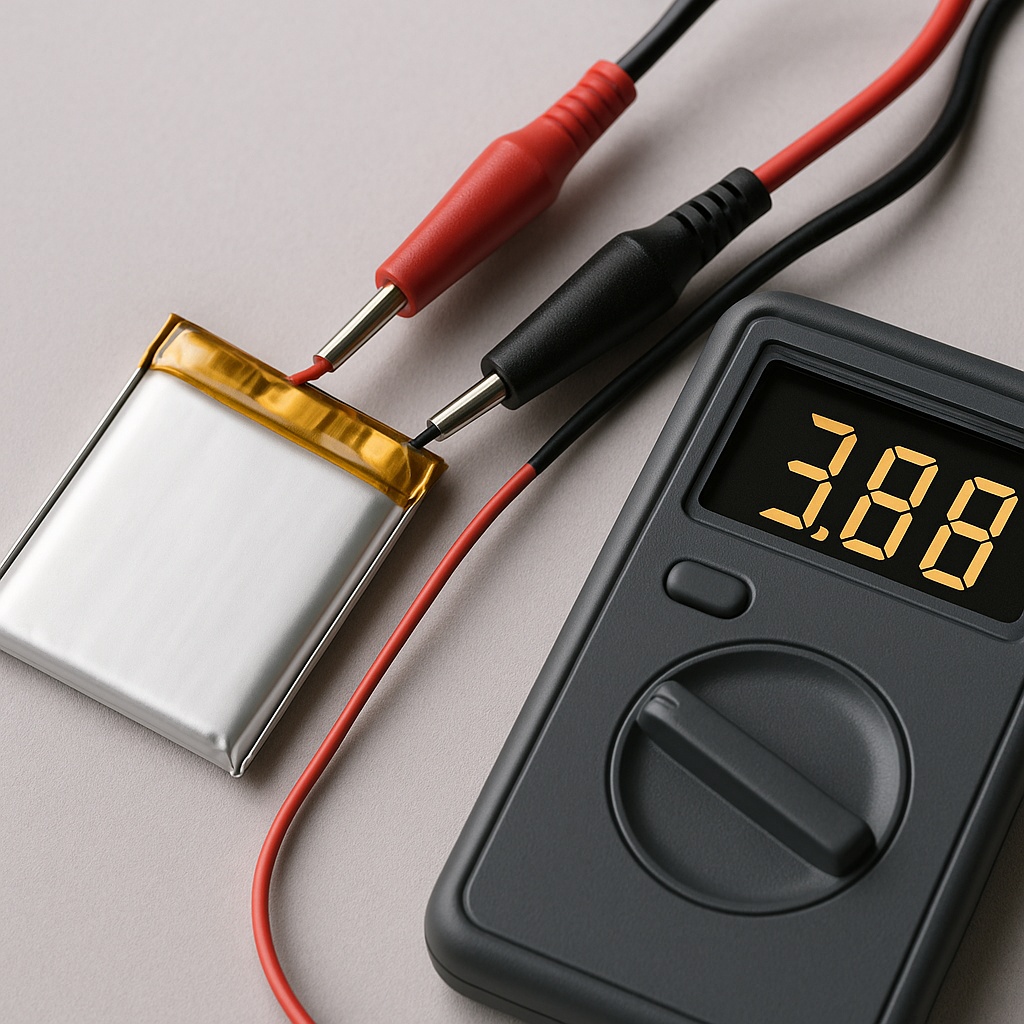Lithium polymer (LiPo) batteries are widely used in drones, RC vehicles, medical equipment, and portable electronics due to their lightweight design and high energy density. Understanding their voltage characteristics is essential for safety, performance, and lifespan optimization. This guide covers key voltage-related concepts every engineer or procurement manager should know.
What is the Voltage Range of a LiPo Battery?
A standard single-cell LiPo battery has a nominal voltage of 3.7V. The voltage typically ranges between 4.2V when fully charged and 3.0V when fully discharged. For multi-cell batteries, the overall voltage multiplies accordingly (e.g., a 3S battery has a nominal voltage of 11.1V).
| Cell Count | Nominal Voltage | Full Charge | Full Discharge |
|---|---|---|---|
| 1S | 3.7V | 4.2V | 3.0V |
| 2S | 7.4V | 8.4V | 6.0V |
| 3S | 11.1V | 12.6V | 9.0V |
What Voltage Is Too Low for Lithium Battery?
Voltage below 3.0V per cell is considered too low. Discharging below this threshold risks permanent capacity loss, swelling, or even internal short circuits. For safety and longevity, many BMS (battery management systems) set a cut-off around 3.2–3.3V.
What Is the Resting Voltage of a LiPo Battery?
The resting voltage refers to the battery’s voltage when it is neither charging nor discharging, typically measured after 1–2 hours of idle time. For a LiPo cell:
-
Full (100%): ~4.15–4.2V
-
Mid-charge (50%): ~3.7V
-
Low (10%): ~3.3V
This helps users estimate remaining capacity without a fuel gauge.
At What Voltage Is a Lithium-Ion Battery Dead?
For LiPo and most lithium-ion chemistries, a cell is considered “dead” or irreversibly damaged if:
-
Voltage falls below 2.5V, especially under load
-
It can no longer return to safe levels upon charging
Some batteries may appear to recharge but will exhibit reduced cycle life or internal damage.
What Is the Cut-Off Voltage for a Lithium Polymer Battery?
The cut-off voltage is the minimum voltage per cell before the system stops discharging to prevent damage. For LiPo batteries, it is generally set at:
-
3.0V (absolute minimum)
-
3.2–3.3V (safe limit)
Custom packs often integrate BMS to enforce this cut-off automatically.
What Is the Cut-Off Voltage for LiPo Discharge?
For practical applications:
-
RC/drone systems use 3.3V/cell to prevent mid-flight power drops.
-
Medical or consumer electronics often set it slightly higher for conservative operation, such as 3.5V/cell.
These values ensure both performance and cycle longevity.
How Low Can You Safely Discharge a LiPo Battery?
A LiPo battery can safely discharge to 3.0V per cell, but most users stop at 3.3–3.5V to:
-
Preserve long-term capacity
-
Avoid deep discharge cycles that accelerate degradation
Lower discharge levels increase cycle wear and should be avoided unless the battery is built for it.
Why LiPo 3.7V?
The 3.7V nominal rating reflects the average voltage during a typical discharge cycle, not the full-charge or empty-state voltage. It balances performance and energy density and serves as a reference point for:
-
Device voltage compatibility
-
Charging and discharging algorithms
-
Regulatory labeling and system design
This standard helps unify battery usage across multiple industries.
Conclusion
Understanding lithium polymer battery voltage isn’t just about numbers—it’s about designing safer, more efficient, and longer-lasting systems. Whether you’re choosing a battery for a medical device or engineering a drone power pack, knowing voltage thresholds like nominal (3.7V), full charge (4.2V), and cut-off (3.0–3.3V) ensures optimal battery health and reliability.
For tailored battery pack design or bulk purchase support, our engineering team is here to help you build smarter power systems.
Post time: May-28-2025

